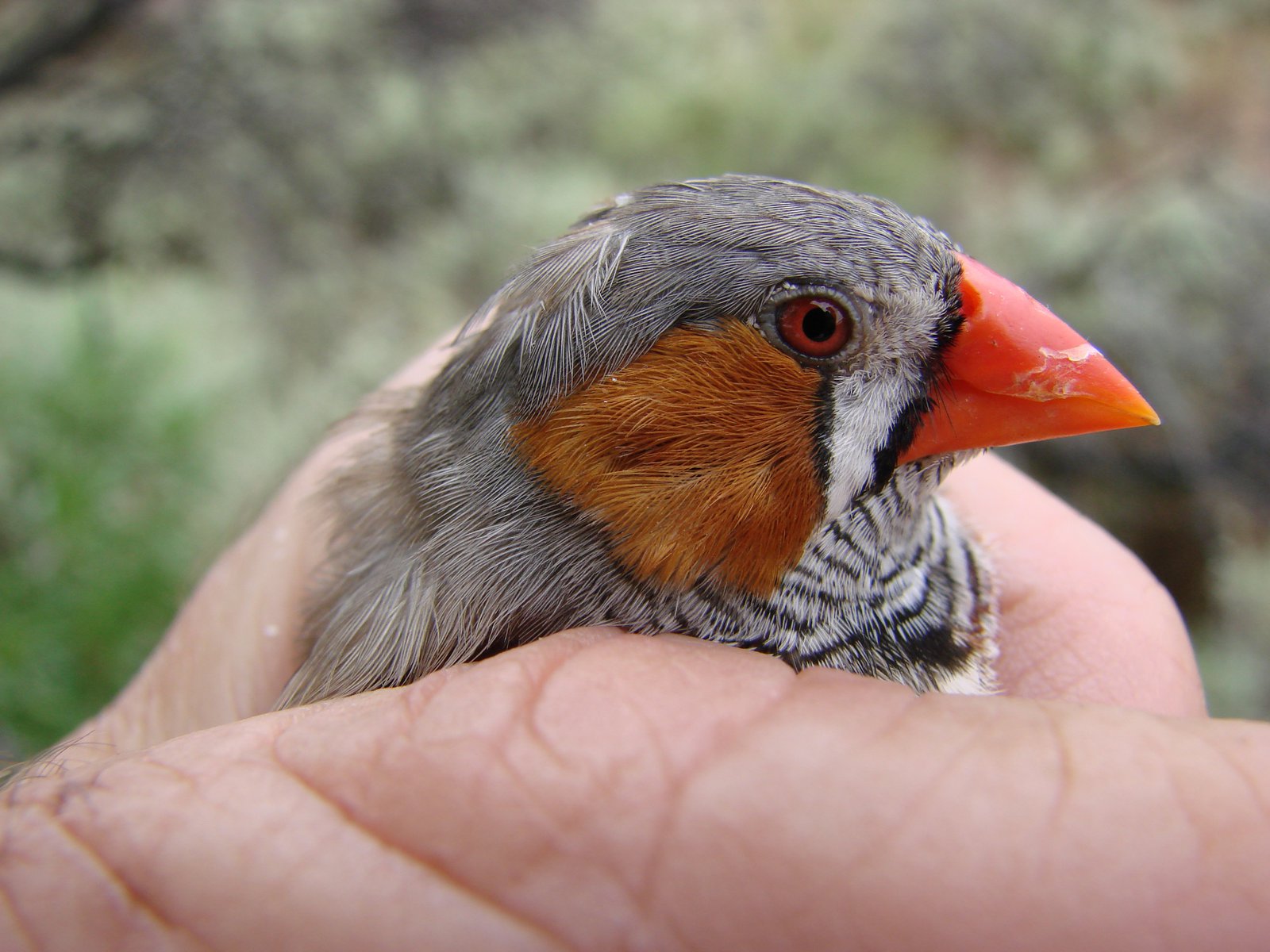Zebra Finch
With a time-span of 70 to 80 days from hatching to becoming sexually active, the Zebra Finch is one of the fastest maturing bird species recorded.
Identification
Zebra Finches are mainly grey, with characteristic black 'tear drop' eye stripes and 'zebra like' black and white barring on the rump and upper tail. The throat and upper breast are pale grey, with fine black barring, and there is a broad black band on upper chest. The sides of the belly are chestnut with many white spots. The remainder of the belly and the undertail are white. The male is distinguished from the female by its orange chestnut cheek patches, a character that gave the species the alternative name of Chestnut-eared Finch. Both sexes have red eyes and bill. The legs and feet are orange yellow. Young are similar in plumage to the female, except that the clear black and white markings of the head are absent. The eyes are grey-brown and the bill is black.

Zebra Finch
Image: 1026273© Australian Museum
Habitat
Zebra Finches are most commonly found in the drier areas of Australia, living year round in social flocks of up to 100 or more birds. They can be found in a variety of habitats, mainly dry wooded grasslands, bordering watercourses.
Distribution
Zebra Finches are the most common and widespread of Australia's grassfinches, found across the Australian mainland, with the exception of Cape York Peninsula and some coastal areas. They are also found in Timor and the Lesser Sunda Islands.
Feeding and diet
Zebra Finches feed in large flocks on fallen or ripening grass seeds. Insects may be taken at any time of the year, but are particularly favoured when feeding young. Feeding takes place on the ground, and, unlike some other grassfinches, birds never pull seed heads down with their feet.
Communication
The most common calls are a loud nasal "tiah", often given in flight, and a soft "tet tet" in close contact.
Breeding behaviours
Zebra Finches pair for life. The female alone selects the nest site, but both birds care for the eggs and young. The male gathers almost all the nesting material, with which the female constructs the loose dome-shaped nest. Birds have also been reported to nest in hollows in the ground, although this behaviour is uncommon.
- Breeding Season: October to April; varies depending on rainfall.
Economic impacts
The introduction of artificial dams and water tanks has actually increased the Zebra Finch's natural range, as the birds need to drink on a regular basis.


